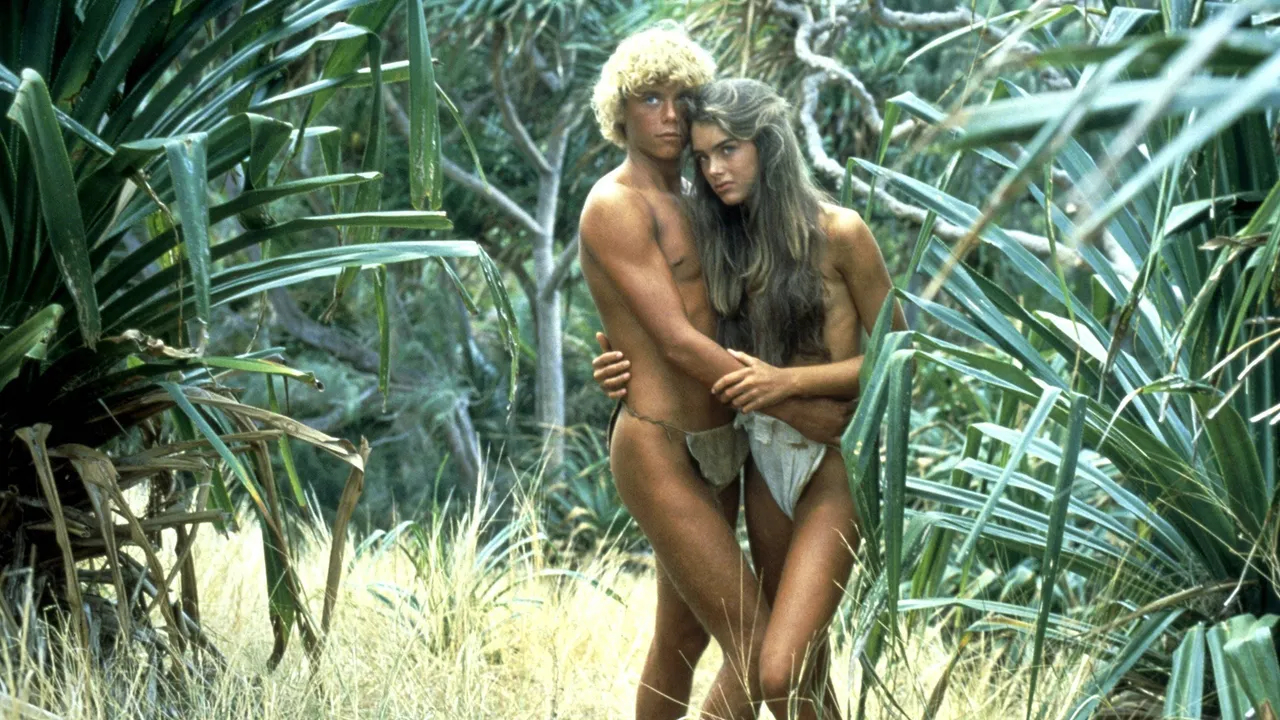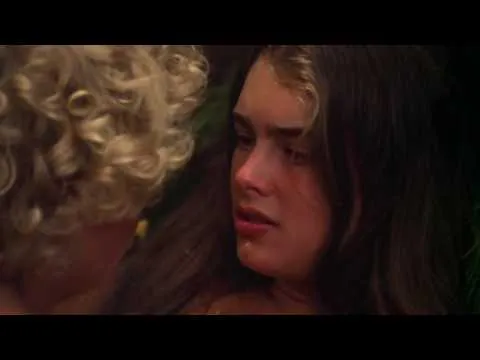
Controversies related to on-screen sexualisation of children, like those created by last year’s Cuties, are nothing new in film history. They were, however, most intense in 1970s, when the latter stages of Sexual Revolution prompted the exploration of the new frontiers of what was permissible in modern society. The best known Hollywood mainstream film to create such controversies was The Blue Lagoon, 1980 romantic adventure written and directed by Randal Kleiser.
The film is the third adaptation of the eponymous 1908 novel by Henry De Vere Stacpole. The plot is set in Pacific Ocean during late Victorian period and begins on board ship sailing to San Francisco. Among passengers are two children – 9-year old boy Richard (played by Glenn Kohan) and his 7-year old cousin Emmeline (played by Elva Josephson). The ship catches fire and ship’s galley cook Paddy Button (played by Leo McKern) brings them to a lifeboat. The ship explodes and the trio gets separated from other lifeboats, including one carrying Richard’s father (played by William Daniels). They drift on the ocean with little food or water before they miraculously find an island with rich vegetation, bountiful fruit supply and running water. Paddy dies, but not before teaching the youngsters to catch fish, make spears, build huts and other survival skills. As weeks, months and years pass, now adolescent Richard and Emmeline (played by Christopher Atkins and Brooke Shidles) have only fading memory of the civilised world and haven’t been taught certain biological facts. They discover strange feelings towards each other and when those feelings turn into action, Emmeline is faced with the strange process that would lead to a child joining the pair of castaways.
Unlike previous adaptations of the novel, Randal Kleiser made his under relatively lax censorship standards of 1970s Hollywood and this allowed him to portray one aspect of the plot somewhat more realistically. It is very unlikely that two children growing up in tropical paradise without adult supervision or Victorian mores would find much need for clothing, so in the film Richard and Emmeline for the most part appear either scantily dressed or completely naked. During the production Brooke Shields was 14 years old, and this fact contributed to the accusations that the film condoned paedophilia. In order to deal with this negative publicity, partially fueled by Shilelds appeared nude in 1978 film Pretty Baby, Kleiser used various camera angles, ingenious hairstyle and body doubles in order not to have its lead actress naked on screen, a fact she would later confirm at US Congress hearing. Controversy was reflected in hostile reception by critics, but it affected the regular audience differently, leading to box office success, number of films that took inspiration from it and 1991 sequel Return to Blue Lagoon.
Viewers who aren’t offended by the mere idea of pre-adults being portrayed naked should judge The Blue Lagoon as any other film. For the most part, it provides stylish kind of entertainment and shows that talented people were involved in the production, most notably famous cinematographer Nestor Almendros who has put Jamaican and Fijian tropical locations to good use. His efforts were aided by Ron and Valerie Taylor, experienced underwater photographers who made this film truly memorable. Basil Poledouris wrote a very good musical score that in many ways elevates the film. Those elements, however, can’t compensate problems caused by bad casting and uninspired script. Shields and Atkins (who, unlike his partner, was 18 at the time of production and didn’t need body doubles while appearing nude) were obviously put on screen because of their looks rather than their acting abilities. They try but their lack of talent and experience is painfully obvious in comparison with veteran character actor Leo McKern who briefly appears at the beginning. The only time film truly works is in the scenes when two protagonists are dealing with the emerging sexuality and their bafflement provides some humour and humanity, making this film more tasteful and less exploitative. Script introduces danger from protagonists in form of human-sacrificing tribe of natives, but that subplot is simply unresolved. The melodramatic and unsatisfying ending, although taken from the original novel, in many ways seals the bad impression of this film.
RATING: 4/10 (++)
Blog in Croatian https://draxblog.com
Blog in English https://draxreview.wordpress.com/
Leofinance blog @drax.leo
Cent profile https://beta.cent.co/@drax
Minds profile https://www.minds.com/drax_rp_nc
Uptrennd profile https://www.uptrennd.com/user/MTYzNA
Hiveonboard: https://hiveonboard.com?ref=drax
Rising Star game: https://www.risingstargame.com?referrer=drax
1Inch: https://1inch.exchange/#/r/0x83823d8CCB74F828148258BB4457642124b1328e
BTC donations: 1EWxiMiP6iiG9rger3NuUSd6HByaxQWafG
ETH donations: 0xB305F144323b99e6f8b1d66f5D7DE78B498C32A7


